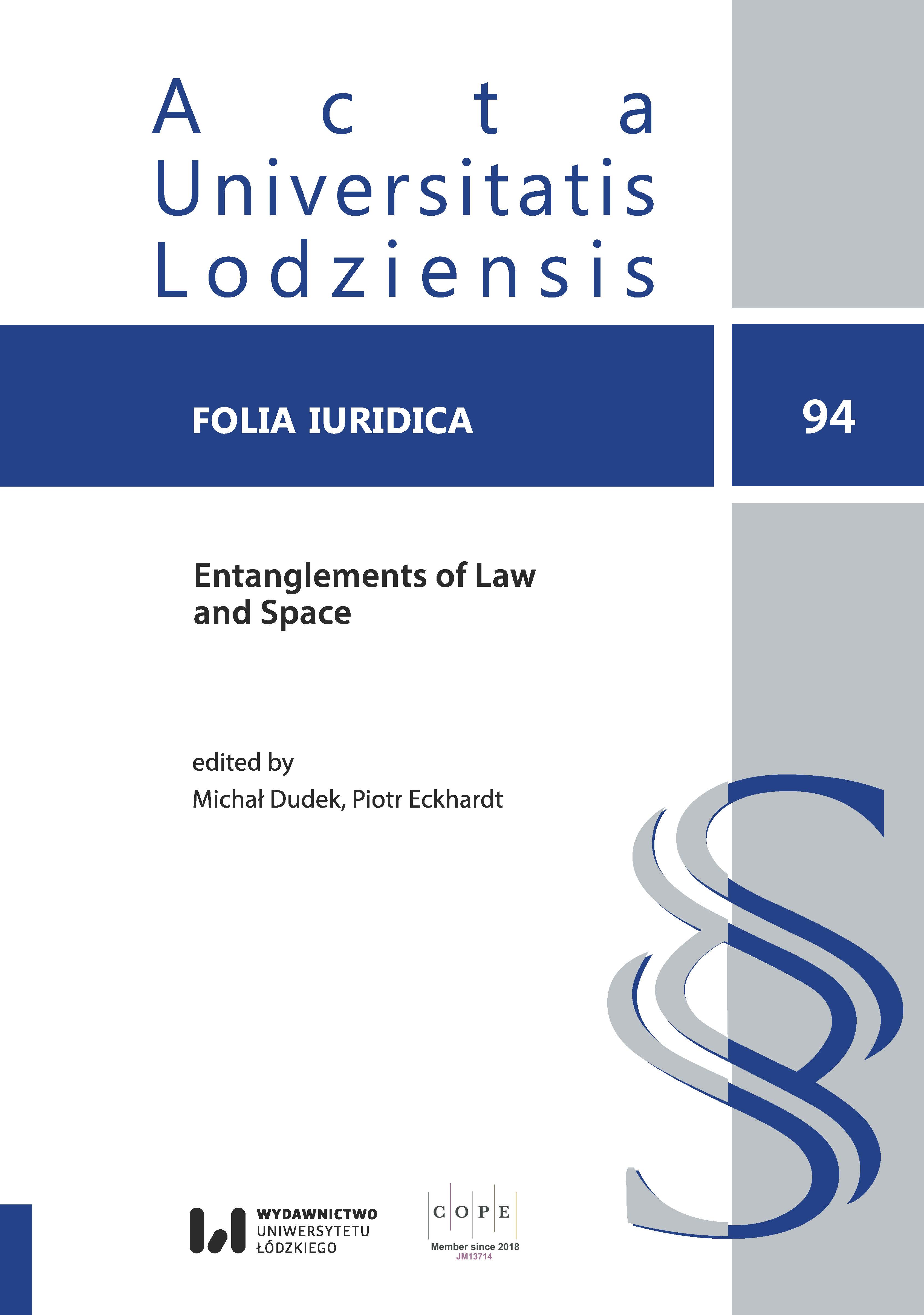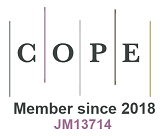Land Use and Facilities and the Spatial Distribution of Urban Property Crime
DOI:
https://doi.org/10.18778/0208-6069.94.05Keywords:
crime mapping, spatial analysis of crime, spatial statistics, geographic information systems (GIS), property crimeAbstract
The main research problem of this article is to check whether and how selected land use and facilities influence the spatial distribution of different kinds of urban thefts (and burglary) in Krakow. The analysis uses data on all crimes committed in Krakow in the years 2016–2018. Its results are generally consistent with the results of other similar studies in so far as they indicate a relationship between the increased criminal activity of perpetrators and the availability of potential victims or objects of attack. Both the higher density of crimes in general and theft in general occurred above all in facilities or in the immediate vicinity of facilities which accumulate large communities for various purposes (activity nodes) or in places which produce the high intensity of people flows (communication nodes). One land use and facilities coexist with an increased density of all types of thefts, while others coexist only with some of them. The results, however, seem inconsistent with the rational choice theory assumptions as high crime density rates were observed in the immediate vicinity of public and private monitoring cameras, as well as within 50 meters of police stations.
Downloads
References
Alexandrie, Gustav. 2017. “Surveillance Cameras and Crime: A Review of Randomized and Natural Experiments.” Journal of Scandinavian Studies in Criminology and Crime Prevention 18(2): 210–222.
Google Scholar
DOI: https://doi.org/10.1080/14043858.2017.1387410
Bowers, Kate, Shane Johnson, Rob T. Guerette, Lucia Summers and Suzanne Poynton. 2011. “Spatial Displacement and Diffusion of Benefits among Geographically Focused Policing Initiatives: A Meta-Analytical Review.” Journal of Experimental Criminology 7(4): 347–374.
Google Scholar
DOI: https://doi.org/10.1007/s11292-011-9134-8
Braga, Anthony A. and Ronald V. Clarke. 2014. “Explaining High-Risk Concentrations of Crime in the City: Social Disorganization, Crime Opportunities, and Important Next Steps.” Journal of Research in Crime and Delinquency 51(4): 480–498.
Google Scholar
DOI: https://doi.org/10.1177/0022427814521217
Brantingham, Paul J. and Patricia L. Brantingham. 1981. “Notes on the Geometry of Crime.” In Environmental Criminology. 27–54. Edited by Paul J. Brantingham and Patricia L. Brantingham. Beverly Hills: Sage Publications.
Google Scholar
Brantingham, Paul J. and Patricia L. Brantingham. 1995. “Criminality of Place: Crime Generators and Crime Attractors.” European Journal on Criminal Policy and Research 3: 5–26.
Google Scholar
DOI: https://doi.org/10.1007/BF02242925
Clarke, Ronald V. 1997. “Introduction.” In Situational Crime Prevention: Successful Case Studies. 1–45. Edited by Ronald V. Clarke. Guilderland: Harrow & Heston.
Google Scholar
Clarke, Ronald V. and Pat Mayhew. 1994. “Parking Patterns and Car Theft Risks: Policy-Relevant Findings from the British Crime Survey.” In Crime Prevention Studies, vol. 3. 91–108. Edited by Ronald V. Clarke. Monsey. NY: Criminal Justice Press.
Google Scholar
Cohen, Lawrence E. and Marcus K. Felson. 1979. “Social Change and Crime Rate Trends: A Routine Activity Approach.” American Sociological Review 44(4): 588–608.
Google Scholar
Cornish, Derek B. and Ronald V. Clarke. 1979. “Social Change and Crime Trends: A Routine Activity Approach.” American Sociological Review 44(4): 588–608.
Google Scholar
DOI: https://doi.org/10.2307/2094589
Cornish, Derek B. and Ronald V. Clarke. 1986. The Reasoning Criminal: Rational Choice Perspectives on Offending. New York: Springer-Verlag.
Google Scholar
DeMotto, Nicole and Caroline P. Davies. 2006. “GIS Analysis of the Relationship Between Criminal Offenses and Parks in Kansas City. Kansas.” Journal of Cartography and Geographic Information Science 33(2): 141–157.
Google Scholar
DOI: https://doi.org/10.1559/152304006777681715
Feng, Jian, Ying Dong and Leilei Song. 2016. “A Spatio-Temporal Analysis of Urban Crime in Beijing: Based on Data for Property Crime.” Urban Studies 53(15): 3223–3245.
Google Scholar
DOI: https://doi.org/10.1177/0042098015612982
Friendly, Michael. 2007. “André-Michel Guerry’s Moral Statistics of France: Challenges for Multivariable Spatial Analysis.” Statistical Science 22(3): 368–399.
Google Scholar
DOI: https://doi.org/10.1214/07-STS241
Groff, Elisabeth and Eric McCord. 2012. “The Role of Neighborhood Parks as Crime Generators.” Security Journal 25: 1–24.
Google Scholar
DOI: https://doi.org/10.1057/sj.2011.1
Hayward, Keith. 2007. “Situational Crime Prevention and Its Discontents: Rational Choice Theory Versus the ‘Culture of Now’.” Social Policy & Administration 41(3): 232–250.
Google Scholar
DOI: https://doi.org/10.1111/j.1467-9515.2007.00550.x
Higgins, Ethan M. and Kristin Swartz. 2018. “Edgeways as a Theoretical Extension: Connecting Crime Pattern Theory and New Urbanism.” Crime Prevention and Community Safety 20(1): 1–15.
Google Scholar
DOI: https://doi.org/10.1057/s41300-017-0021-8
Hirschfield, Alex and Kate J. Bowers. 1997. “The Effect of Social Cohesion on Levels of Recorded Crime in Disadvantaged Areas.” Urban Studies 34(8), 1275–1295.
Google Scholar
DOI: https://doi.org/10.1080/0042098975637
Kennedy, Leslie W. and Joel M. Caplan. 2012. A Theory of Risky Places. Newark, NJ: Rutgers Center on Public Security. Accessed February 12, 2021. http://www.rutgerscps.org/uploads/2/7/3/7/27370595/risktheorybrief_web.pdf
Google Scholar
Kinney, J. Bryan, Patricia L. Brantingham, Kathryn Wuschke, Michael G. Kirk and Paul J. Brantingham. 2008. “Crime Attractors. Generators and Detractors: Land Use and Urban Crime Opportunities.” Built Environment 34(1): 62–74.
Google Scholar
DOI: https://doi.org/10.2148/benv.34.1.62
Kuo, Frances E. and William C. Sullivan. 2001. “Environment and Crime in the Inner City – Does Vegetation Reduce Crime?” Environment and Behavior 33(4): 543–557.
Google Scholar
DOI: https://doi.org/10.1177/00139160121973124
Kurland, Justin, Shane D. Johnson and Nick Tilley. 2014. “Offenses Around Stadiums: A Natural Experiment on Crime Attraction and Generation.” Journal of Research in Crime and Delinquency 51(1): 5–28.
Google Scholar
DOI: https://doi.org/10.1177/0022427812471349
La Grange, Teresa C. 1999. “The Impact of Neighborhoods Schools and Malls on the Spatial Distribution of Property Damage.” Journal of Research in Crime and Delinquency 36(4): 393–422.
Google Scholar
DOI: https://doi.org/10.1177/0022427899036004003
Levy, Marissa P. and Christine Tartaro. 2010. “Auto Theft: A Site-Survey and Analysis of Environmental Crime Factors in Atlantic City, NJ.” Security Journal 23(2): 75–94.
Google Scholar
DOI: https://doi.org/10.1057/palgrave.sj.8350088
Lisowska-Kierepka, Agnieszka. 2019. “Przestępczość w przestrzeni – geograficzne badania zjawiska w wielkim mieście (przykład Wrocławia, Krakowa i Poznania)” [“Crime in Space – Geographical Studies of the Phenomenon in a Big City (Examples of Wrocław, Kraków and Poznań)”]. Rozprawy Naukowe Instytutu Geografii i Rozwoju Regionalnego Uniwersytetu Wrocławskiego, vol. 44. Wrocław: Uniwersytet Wrocławski.
Google Scholar
Loukaitou-Sideris, Anastasia, Robin Liggett and Hiroyuki Iseki. 2002. “The Geography of Transit Crime: Documentation and Evaluation of Crime Incidence on and Around the Green Line Stations in Los Angeles.” Journal of Planning Education and Research 22(2): 135–151.
Google Scholar
DOI: https://doi.org/10.1177/0739456X02238443
Lu, Yongmei. 2006. “Spatial Choice of Auto Thefts in an Urban Environment.” Security Journal 19(3): 143–166.
Google Scholar
DOI: https://doi.org/10.1057/palgrave.sj.8350008
McCord, Eric S. and Jerry H. Ratcliffe. 2009. “Intensity Value Analysis and the Criminogenic Effects of Land Use Features on Local Crime Problems.” Crime Patterns and Analysis 2(1): 17–30.
Google Scholar
Mordwa, Stanisław. 2016. “The Geography of Crime in Poland and Its Interrelationship with Other Fields of Study.” Geographia Polonica 89(2): 187–202.
Google Scholar
DOI: https://doi.org/10.7163/GPol.0053
Morenoff, Jeffrey D., Robert J. Sampson and Stephen W. Raudenbush. 2001. “Neighborhood Inequality, Collective Efficacy, and the Spatial Dynamics of Urban Violence.” Criminology 39(3): 517–558.
Google Scholar
DOI: https://doi.org/10.1111/j.1745-9125.2001.tb00932.x
Piza, Eric, Shun Feng, Leslie Kennedy and Joel Caplan. 2017. “Place-Based Correlates of Motor Vehicle Theft and Recovery: Measuring Spatial Influence Across Neighbourhood Context.” Urban Studies 54(13): 2998–3021.
Google Scholar
DOI: https://doi.org/10.1177/0042098016664299
Poister, Theodore H. 1996. “Transit-Related Crime in Suburban Areas.” Journal of Urban Affairs 18(1): 63–75.
Google Scholar
DOI: https://doi.org/10.1111/j.1467-9906.1996.tb00366.x
Potchak, Marissa C., Jean M. McGloin and Kristen M. Zgoba. 2002. “A Spatial Analysis of Criminal Effort: Auto Theft in Newark, New Jersey.” Criminal Justice Policy Review 13(3): 257–285.
Google Scholar
DOI: https://doi.org/10.1177/0887403402133004
Quick, Matthew and Jane Law. 2019. “Time-Varying Relationships Between Land Use and Crime: A Spatio-Temporal Analysis of Small-Area Seasonal Property Crime Trends.” Urban Analytics and City Science 46(6): 1018–1035.
Google Scholar
DOI: https://doi.org/10.1177/2399808317744779
Ratcliffe, Jerry H. and Travis A. Taniguchi. 2008. “Is Crime Higher Around Drug-Gang Street Corners? Two Spatial Approaches to the Relationship Between Gang Set Spaces and Local Crime Levels.” Crime Patterns and Analysis 1(1): 17–39.
Google Scholar
Ristea, Alina, Justin Kurland, Bernd Resch, Michael Leitner and Chad Langford. 2018. “Estimating the Spatial Distribution of Crime Events Around a Football Stadium from Georeferenced Tweets.” International Journal of Geo-Information 7(2): 1–25.
Google Scholar
DOI: https://doi.org/10.3390/ijgi7020043
Roncek, Dennis W., Ralph Bell and Jeffrey M.A. Francik. 1981. “Housing Projects and Crime: Testing a Proximity Hypothesis.” Social Problems 29(2): 151–166.
Google Scholar
DOI: https://doi.org/10.1525/sp.1981.29.2.03a00060
Rosenfeld, Richard. 2001. “Social Capital and Homicide.” Social Forces 80(1): 283–309.
Google Scholar
DOI: https://doi.org/10.1353/sof.2001.0086
Sarangi, Sudhanshu and Donna Youngs. 2006. “Spatial Patterns of Indian Serial Burglars with Relevance to Geographical Profiling.” Journal of Investigative Psychology and Offender Profiling 3(2): 105–115.
Google Scholar
DOI: https://doi.org/10.1002/jip.38
Shepley, Mardelle, Naomi Sachs, Hessam Sadatsafavi, Christine Fournier and Kati Peditto. 2019. “The Impact of Green Space on Violent Crime in Urban Environments: An Evidence Synthesis.” International Journal of Environmental Research and Public Health 16(24): 1–19.
Google Scholar
DOI: https://doi.org/10.3390/ijerph16245119
Sherman, Lawrence W. and John E. Eck. 2002. “Policing for Prevention.” In Evidence-Based Crime Prevention, 295–329. Edited by Lawrence W. Sherman, David P. Farrington, Brandon C. Welsh and Doris Layton MacKenzie. New York: Routledge.
Google Scholar
DOI: https://doi.org/10.4324/9780203166697_chapter_8
Sherman, Lawrence W. and David Weisburd. 1995. “General Deterrent Effects of Police Patrol in Crime Hotspots: A Randomized Controlled Trial.” Justice Quarterly 12(4): 625–648.
Google Scholar
DOI: https://doi.org/10.1080/07418829500096221
Skubak Tillyer, Marie and Rebecca J. Walter. 2019. “Busy Businesses and Busy Contexts: The Distribution and Sources of Crime at Commercial Properties.” Journal of Research in Crime and Delinquency 56(6): 816–850.
Google Scholar
DOI: https://doi.org/10.1177/0022427819848083
Sypion-Dutkowska, Natalia. 2014. “Uwarunkowania przestrzenne przestępczości w wielkim mieście w ujęciu GIS (na przykładzie Szczecina)” [“Spatial Determinants of Crime in a Big City from GIS Approach (Based on the Example of Szczecin)”]. Studia Komitetu Przestrzennego Zagospodarowania Kraju PAN, vol. 159. Warszawa: Komitet Przestrzennego Zagospodarowania Kraju PAN.
Google Scholar
Sypion-Dutkowska, Natalia and Michael Leitner. 2017. “Land Use Influencing the Spatial Distribution of Urban Crime: A Case Study of Szczecin, Poland.” International Journal of Geo-Information 6(74): 1–23.
Google Scholar
DOI: https://doi.org/10.3390/ijgi6030074
Toomey, Traci L., Darin J. Erickson, Bradley P. Carlin, Harrison S. Quick, Eileen M. Harwood, Kathleen M. Lenk and Alexandra M. Ecklund. 2012. “Is the Density of Alcohol Establishments Related to Nonviolent Crime?” Journal of Studies on Alcohol and Drugs 73(1): 21–25.
Google Scholar
DOI: https://doi.org/10.15288/jsad.2012.73.21
Wechsler, Henry, Jae Eun Lee, John Hall, Alexander C. Wagenaar and Hang Lee. 2002. “Secondhand Effects of Student Alcohol Use Reported by Neighbors of Colleges: The Role of Alcohol Outlets.” Social Science & Medicine 55(3): 425–435.
Google Scholar
DOI: https://doi.org/10.1016/S0277-9536(01)00259-3
Weisburd, David and John E. Eck. 2004. “What Can Police Do to Reduce Crime, Disorder and Fear?” The Annals of the American Academy of Political and Social Science 593(1): 42–65.
Google Scholar
DOI: https://doi.org/10.1177/0002716203262548
Weisburd, David, Cynthia M. Lum and Anthony Petrosino. 2001. “Does Research Design Affect Study Outcomes in Criminal Justice?” The ANNALS of the American Academy of Political and Social Science 578(1): 50–70.
Google Scholar
DOI: https://doi.org/10.1177/0002716201578001004
Welsh, Brandon C. and David P. Farrington. 2009. “Public Area CCTV and Crime Prevention: An Updated Systematic Review and Meta-Analysis.” Justice Quarterly 26(4): 716–745.
Google Scholar
DOI: https://doi.org/10.1080/07418820802506206
Welsh, Brandon C., David P. Farrington and Sean J. O’Dell. 2010. “Effectiveness of Public Area Surveillance for Crime Prevention: Security Guards, Place Managers and Defensible Space. Swedish National Council for Crime Prevention.” Accessed February 12, 2021. http://mws-73973.mws3.csx.cam.ac.uk/people/academic_research/david_farrington/survsw.pdf
Google Scholar
Welsh, Brandon C., Meghan E. Peel, David P. Farrington, Henk Elffers and Anthony A. Braga. 2011. “Research Design Influence on Study Outcomes in Crime and Justice: A Partial Replication with Public Area Surveillance.” Journal of Experimental Criminology 7(2): 183–198.
Google Scholar
DOI: https://doi.org/10.1007/s11292-010-9117-1
Downloads
Published
How to Cite
Issue
Section
License

This work is licensed under a Creative Commons Attribution-NonCommercial-NoDerivatives 4.0 International License.













